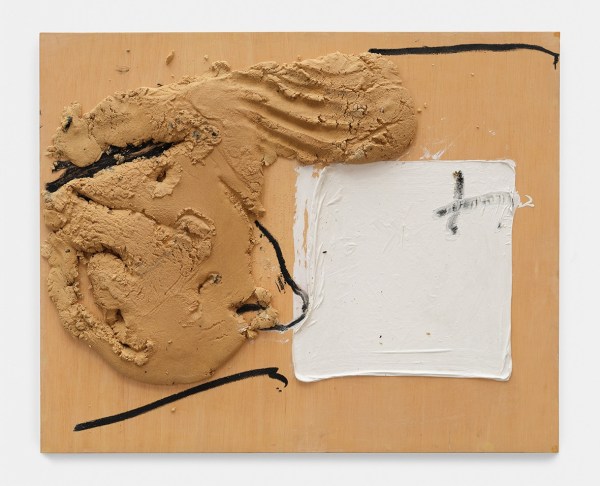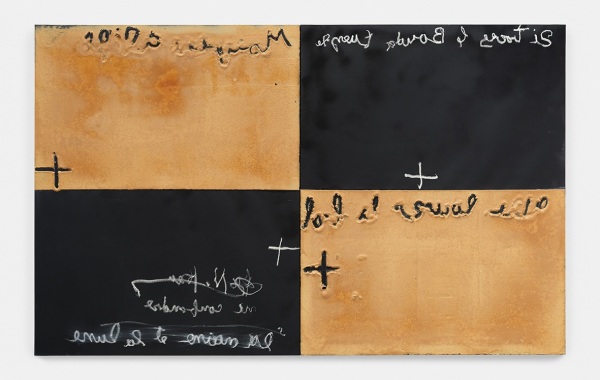-
Antoni Tàpies
Timothy Taylor, LondonTimothy Taylor is delighted to present a solo exhibition of paintings and works on paper by Antoni Tàpies (1923-2012) in honour of the late Catalan artist’s 100th birthday. The works, dating from 1989 to 2008, express spiritual decay and rebirth in blackened paintings that reveal the eternal. The exhibition is curated by Natasha Hébert, the artist’s daughter-in-law.
Stony canvases like thousand-year-old mountains, ragged graffiti, and archaic symbols evoking the mysterious marks of a lost ancient tribe establish Tàpies’s ferocious contributions to post-war abstraction. Prefiguring the work of Arte Povera by decades, Tàpies found meaning in the humblest grains of sand, ‘the salt of the earth’, in rough-hewn paintings that illuminate the origins of life and death in a time in which religion had lost its resonance and violence cruelly divided the European continent. Tàpies’s paintings speak poignantly to our own uneasy present under a splintered global order, and remain a powerful influence on later artists who sought to embody the spiritual emptiness unleashed by the post-war period, such as Jannis Kounellis, Anselm Kiefer, and Julian Schnabel. -
-
The late works in this exhibition sees Tàpies return to the essential language of crosses, triangles, open books and wall-like canvases that forged his career in the mid-1950s, after a brief period as a Surrealist with a mutually influential friendship with Joan Miró. Granular materials such as mud and sand refer not only to knowledge erased by history or not fully understood, but also Tàpies’ passionate belief in the working class: The oppression of the Catalan people under Franco simmers beneath the surface. In Ona-Mar (2006), an etched silkscreen resembles a newspaper scribbled with codes, suggesting a world of hidden protest – repressed, clandestine, but full of life.
-
-
Borders and closed-off spaces signal the horizon of heaven and earth, the limits to our knowledge: In Matriu(1991), the cross symbol submerges a white canvas in graffiti spray-like black paint; the cross also appears in Quatre Parts (2008), in which black and gold squares divide the canvas into four parts. In a rare insight into his belief in the sacred image, he wrote: ‘A painting is a door that leads to another door. Art, no matter how excellent, will always be just one more manifestation of maya, of the deception at the core of everything. And the truth we seek will never be found in a painting, but will only appear behind the last door that the observer learns to open with his own strength.’
The eternal, the artist hints, lies in a blade of grass or speck of earth, more infinite than a human life. But the greatest mysteries in his work can only be apprehended indistinctly, from a distance, with a power that lies in the heart of the observer. -
Antoni Tàpies
















